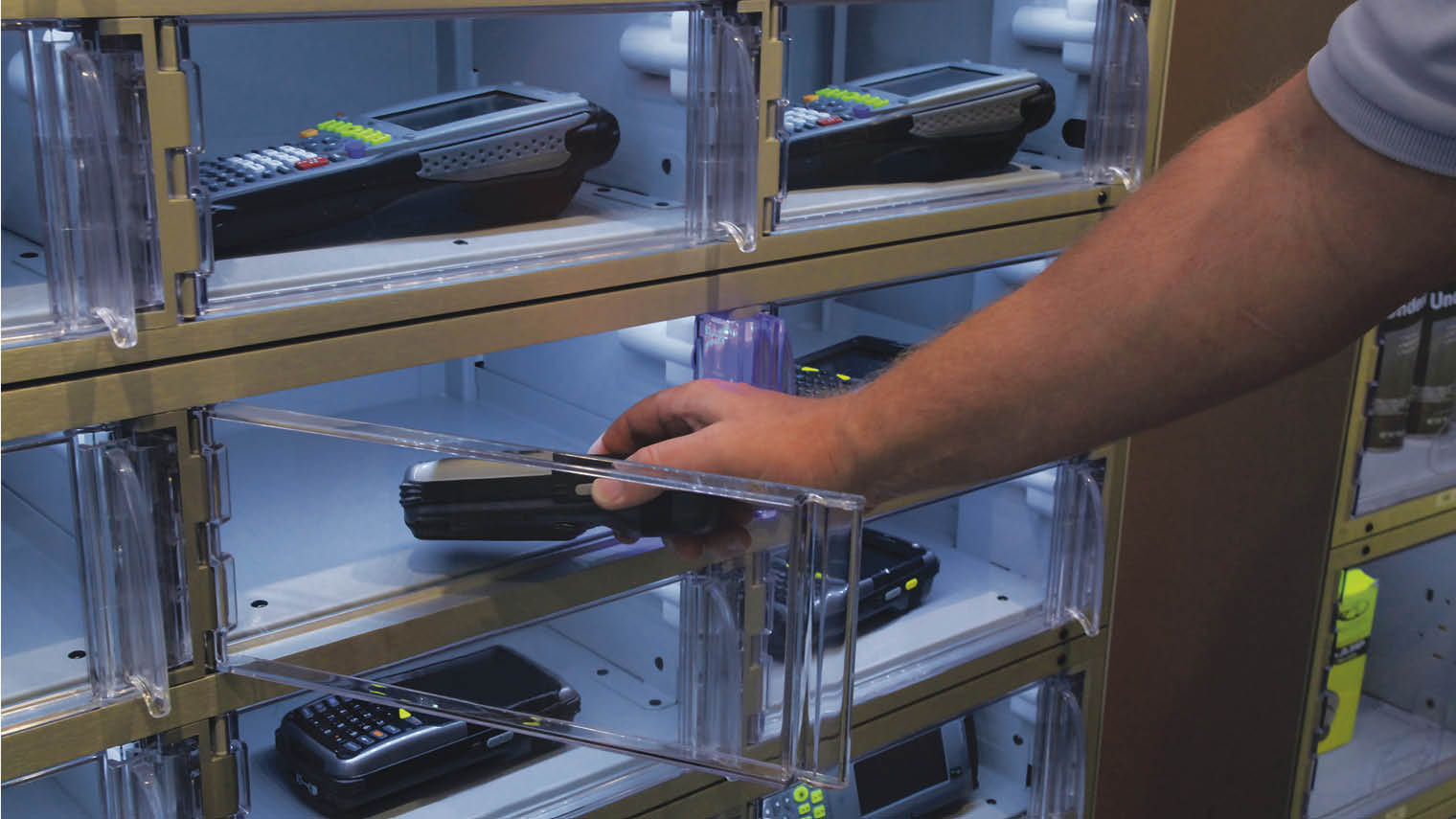Longer supply chains, pressure on margins, just-in-time delivery and customers who are increasingly demanding – the challenges facing distribution centres are always growing.
Automation provides more than just faster, more efficient and more accurate management of goods. Instead of spending time replacing partially charged scanner batteries mid-shift and chasing those that have gone astray, employees move to more valuable jobs that humans do better than machines, such as picking orders and updating inventory records.
The challenge, though, is to find the most appropriate technology. Many distribution centres rely on handheld scanners, voice-picking headsets and other mobile devices used to track goods throughout their facilities. These devices are costly but, of course, easily accessible, versatile and convenient to use. And all too often a manual process is used to manage these devices. This presents a variety of problems and introduces a whole range of inefficiencies of their own.
Apex automated dispensing systems are intelligent lockers which record every employee interaction and then communicate with a cloud-based software platform
“We hear crazy-but-true stories about what happens to scanners and other mission-critical devices quite often,” says Julian Adams, managing director of Apex Supply Chain Technologies, a world-leading provider of self-serve, automated dispensing systems for use in a variety of applications and industries. This includes intelligent lockers that manage, track and control handheld devices for distribution centres and warehouses.
Mr Adams continues: “We hear about managers spending hours a day checking out scanners and related equipment, and checking them in again. Often they are dispatched with partially charged batteries. They’re sometimes left on shelves or accidentally shipped out with orders. We’ve even heard of lost scanners turning up on eBay.”
Growing concerns about the impact of handheld scanner mismanagement is attracting more companies, including FedEx, Verizon and Best Buy, to adopt Apex’s technology. Founded just over ten years ago, Apex has offices in the United States, UK, Germany, Poland and Australia.
Apex automated dispensing systems are intelligent lockers which record every employee interaction and then communicate with the Apex Trajectory Cloud™, a cloud-based software platform which manages the transactions, analyses the data and helps control access to the device.
“There are more than 100,000 of our devices tracking billions of transactions to help thousands of customers worldwide automate various processes, including the management of handheld scanners,” says Mr Adams. “Our customers like the fact that our devices are easy to use and easy to implement. Yet this technology has a powerful impact on productivity and the bottom line, automating tasks distribution centre managers have come to accept as being manual.”

Distribution centres are experiencing several benefits from these systems. Workers become accountable for their device, and use the lockers to report when they are damaged and need repair. If a worker doesn’t return a device, the manager is automatically notified of the overdue item, knows who has the scanner and when they checked it out. This means scanners are less likely to go missing between shift changes and productivity also increases.
“In today’s large warehouse environments, just walking to a centralised storeroom to get the tools you need to do your job can mean hours wasted during each shift,” says Mr Adams. “Our customers deploy our devices at the point of work instead of in a centralised location. They don’t require an employee to distribute the handheld equipment either, because workers use their proximity card or ID badge to access the locker compartment with their device.
“Managers can also provide access based on each employee’s work group to ensure employees are only granted access to the correct items they need to do their job. Apex intelligent locker systems also ensure all devices are fully charged when they are dispatched.”
These once manual processes now have a digital audit trail, qualifying them for inclusion in companies’ continuous improvement programmes designed to glean even more efficiencies and productivity from their operations while eliminating waste and unnecessary costs.
“Our automated intelligent lockers can easily be integrated into a company’s existing systems to become a seamless part of its operations,” says Mr Adams. “As distribution centres and warehouses are required to be faster and more efficient to stay competitive, automated asset management lockers are a straightforward way to meet these challenges.”
For more information please visit www.apexsupplychain.com
MORE THAN 1,000 HOURS SAVED AND 100% REDUCTION IN LOST HANDSETS
Effectively managing the through-flow of inventory at its main distribution centre is essential for a successful automotive equipment manufacturer. To keep its facility working at full capacity requires hundreds of employees across two shifts, armed with scanners, voice-picking equipment and material handling trucks.
However, the company’s scanners were being housed in an unlocked cabinet with no formal management. The honour system applied. As a result, two team members spent around two hours a day looking for the devices and then finding properly charged batteries for them.
The need to upgrade the warehouse management system and its handheld scanners provided the company with the opportunity to rethink its approach completely and benefit from the latest technology.
Using automated, self-serve asset management lockers from Apex Supply Chain Technologies, the company has full visibility of their mobile devices at all times. Employees are more productive. In fact, just eliminating a twice-daily search for scanners saves more than 1,000 hours annually. And since the company no longer loses scanners, costs have decreased significantly as well.
The project has been so successful other facilities throughout the global company visit this location to study it as a best practice in improving the management of handheld assets.
